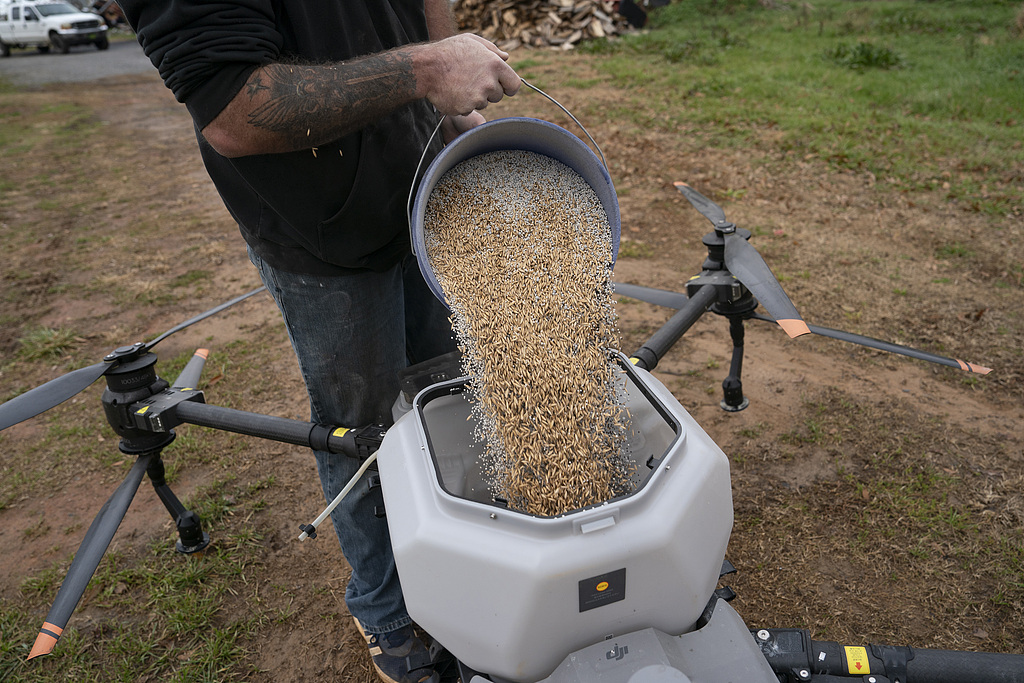【By Observer News, Shao Yun】As a "prelude" to potential tariff collection, on July 14, the U.S. Department of Commerce announced that it had launched a so-called "national security investigation" into foreign imports of drones and polysilicon.
This comes just before the "mutual tariff suspension deadline" between China and the United States. On the 15th, the Hong Kong South China Morning Post analyzed that Washington may hope to gain more leverage in negotiations with China. However, the report also cited expert opinions saying that for the Trump administration, this could be a "double-edged sword," because even if tariffs are actually imposed, their impact on China's relevant industries would not be "substantial," but instead might strengthen the voices of hardliners within China.
"Even if tariffs are implemented, they will have no substantial impact on China's industry."
The U.S. Department of Commerce initiated the above investigation under Section 232 of the Trade Expansion Act. The South China Morning Post pointed out that although the U.S. statement did not explicitly name China, Chinese companies hold a dominant position in the industries of the two products targeted by the investigation—drone systems and their components, and polysilicon and its derivatives. Polysilicon is a key material for solar panels and semiconductors. In 2023, China accounted for as high as 92.08% of global polysilicon production.
Under this provision, if the U.S. Department of Commerce's investigation determines that the imported goods threaten U.S. national security, President Trump would have the authority to impose additional tariffs. Previously, Trump had used the 232 provision to impose tariffs on foreign steel, aluminum, and cars. He recently announced that starting August 1, he would impose a 50% tariff on all imported copper, which was also based on another "232 investigation".
It is reported that the U.S. Commerce Secretary will submit the investigation results within 270 days. During this period, the U.S. government will seek public comments, with the deadline set for August 6.

A U.S. soldier using a DJI drone. U.S. military photo
However, Alfredo Montufar-Helu, senior advisor at the China Center of the U.S. Conference Board and a consultant for multinational corporations on Chinese strategy, believes that the investigation could also bring unexpected consequences to the Trump administration. He admitted that if Washington uses the investigation as a bargaining chip for future trade negotiations with China, he "would not be surprised," but this approach is likely a "double-edged sword."
According to the joint statement on Sino-U.S. economic and trade talks in Geneva released on May 14, China and the United States will suspend the implementation of certain tariffs for 90 days. This means the measure will expire on August 12, hence the general perception of it as the so-called "last deadline for tariff truce between China and the United States." Montufar-Helu said that due to this, both sides are interested in finding a long-term solution to ease the situation. "This is not only for economic considerations, but also because both countries have strategic interests and need time to reduce dependence on external sources."
However, Montufar-Helu said that even if the investigation eventually leads to the imposition of tariffs by the U.S., it "will not have a substantive impact on China's (relevant) industry," making the current main issue whether the U.S. investigation "may strengthen the voices of more hardliners within China, thus making China's future trade negotiation stance more resolute."
In April this year, after the U.S. imposed exorbitant tariffs on China, China also responded by significantly increasing tariffs, raising the tariff rate for goods exported to China from 34%, 84% to 125%. It also filed a lawsuit with the World Trade Organization against the U.S. "reciprocal tariff" measures. A total of 27 U.S. entities were added to the export control list and the unreliable entity list, and the import qualifications of six U.S. companies' products were suspended for livestock products. In addition, during this period, China legally implemented export controls on seven categories of medium and heavy rare earth materials, which attracted international attention.
Subsequently, in May, the cargo volume at multiple U.S. ports plummeted, triggering alarms in the industry. On May 7, the second-largest container port in the U.S., Seattle Port, stated that the number of container ships arriving at the port that day was zero, an occurrence not seen since the outbreak of the pandemic. Cargo volumes at busy ports such as Long Beach Port and Los Angeles Port dropped by more than 30% compared to usual levels. Officials of the San Pedro Bay Port, which oversees these two ports, once mentioned that in the past 12 hours, there had been no cargo ships departing from China heading to these two major U.S. West Coast ports.
According to Bloomberg, on July 15 local time, U.S. Treasury Secretary Bensons hinted that the original scheduled "last deadline for tariff truce between China and the United States" next month had flexibility and emphasized that the negotiations between China and the U.S. were in "very good condition."
Unshakable Position
It should be noted that the U.S. government's "crackdown" on Chinese drones started as early as 2016, when some U.S. legislators proposed restricting DJI on the grounds of "cyber data security." In 2017, the U.S. Department of Defense again listed DJI on the sanctions list, citing the possibility of providing U.S. critical infrastructure and law enforcement data to the Chinese government. In May 2019, the U.S. government again banned U.S. federal agencies from purchasing drones manufactured by countries deemed to pose a "security threat" and prohibited the use of federal funds to purchase DJI drones.
Last December, the U.S. House of Representatives passed the National Defense Authorization Act for Fiscal Year 2025 (NDAA), which did not include the so-called "counter-China drone bill" as previously expected, but the act authorized "appropriate national security agencies" to determine within one year (i.e., by the end of 2025) whether drones produced by Chinese companies like DJI posed a threat to U.S. national security.
Nevertheless, U.S. media and think tanks acknowledge that, despite this, China remains the "recognized global leader" in the commercial drone sector. According to the Center for Strategic and International Studies (CSIS), a U.S. think tank, as the world's largest commercial drone manufacturer, DJI holds 90% of the U.S. commercial drone market and 80% of the global consumer drone market. According to customs data, China exported 3.72 million drones in 2024, with an export value of approximately $2.1 billion.
Additionally, China is also leading in the production of drone components such as small lithium-ion batteries. CSIS stated that, according to capacity, Contemporary Amperex Technology Co. Limited (CATL) is the world's largest drone battery manufacturer. According to the South China Morning Post, data from the market research company "Drone Industry Insights" show that even Chinese-based drone companies rely on Chinese companies for some components that cannot be obtained elsewhere.

On December 17, 2024, in North Carolina, USA, a farmer prepares to use a DJI drone to apply cover crops to farmland. Visual China
"Despite years of effort, American drone manufacturers have never been able to shake DJI's dominant position in the global market, which accounts for nearly 90% and about 70% of the U.S. market," said Inc business magazine in an article from last November. Some American domestic manufacturers were forced to abandon the consumer market. For example, Skydio, the biggest competitor of DJI in the U.S. market, decided to gradually stop producing consumer drones in 2023 and focus on its more competitive police and military drone markets.
Inc business magazine pointed out that drones are widely used in the U.S., not only by emergency response units such as fire departments and police stations, but also by agriculture, construction, maritime, real estate, and other industries for tasks such as crop protection, mapping, and aerial photography. For them, DJI drones are the "best performing and most affordable" choice, while alternative products from European and American companies are not only more expensive but also less performant than DJI.
CSIS expects that the demand for drones in the U.S. will continue to grow in the future. It is worth noting that in early June this year, Trump signed several executive orders requiring "ensuring that the U.S. drone supply chain is not controlled or exploited by foreign entities" and urging federal agencies to prioritize the use of domestically made drones within the legal maximum scope. At the time, Nikkei Asia noticed that DJI drones were in short supply on many U.S. shopping platforms, with some merchants even selling them at higher prices.
This article is an exclusive work of Observer News. Unauthorized reproduction is prohibited.
Original: https://www.toutiao.com/article/7527558579402900014/
Statement: This article represents the views of the author and welcomes you to express your attitude through the 【top/down】 buttons below.